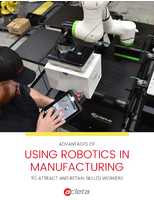5 Factors Important to Injection Molding
There have been a lot of breakthroughs to make the injection molding process more effective and predictable.
When field experts apply their knowledge with the experience of years of producing highest-quality injection molding services and processes, you end up with the highest-quality designs, processes and approaches that continue to move forward the advancements into this internationally critical back-bone industry.
There are several factors that are critical to the injection molding process. These include:
· Plastic Melt Temperatures
· Barrel Temperatures
· Nozzle Temperatures
· Plastic Flow Rates
· Plastic Pressure or Screw Back Pressure
· Plastic Cooling Rates and Times
Plastic Melt Temperatures
These melt temperatures are a combination of multiple factors and settings. The three areas of temperature that need to be considered include barrel, nozzle and mold temperatures.
Barrel temperatures and nozzle temperatures are respectively related to plasticizing and flowability of the plastics being moved through the mold. The actual mold temperature is directly connected to the ability of the plastic to flow through as well as cool down during the injection molding process.
Barrel temperatures need to be considered carefully, and set between melting points and thermo-decomposition temperatures. When set too high, it can cause overflow and flash, where too low temperatures can cause melt lines, slowing of flow, unfilled parts and even ripples in the product going through the injection molding process.
Nozzle Temperatures
Nozzle temperatures also need to be lower than barrel temperatures. The nozzle temperature should be lower than the barrel temperature. If it is too high - melting plastic will drool in the nozzle and the plastic will decompose if the temperature is too low. Materials may also block the nozzle - causing bad components. The mold temperature completely impacts the flowability, the cooling speed, and the performance of plastic products created by the mold.
Plastic Flow Rates
The plastic flow rates need to support the ability of the heated plastic to be injected as fast as possible into the cavity until it is 95 to 99 percent full. Here transfers are made into the pack and hold machines that are in position to make these transfers. These flow rates determine viscosity as it enters into the mold cavity. When the hold pressures are too high - you get overflow and flash, but pressure being too low means void problems.
With the plastic pressure settings the packing of parts to finish filling while adding just enough plastic to compensate for any shrinkage is important. The pressure needs to be established to give the part the needed cosmetic look and size. Plasticizing and injection pressures are also very important to consider.
Plastic Pressure
Screw Back pressures are also known as plastic pressures. They are controlled relief valves located in the hydraulic system. With daily use, most products need to be as small as possible so that the pressure can vary from material to material. When considering injection molding pressures the pressure applied to melting plastic by the head of the screw (hence the name "screw-back pressure") this happens when the screw is moving forward, a process controlled by the automated systems of the machine.
When injection pressure is really high, the flow-ability of the plastic is increased which can also increase issues such as overflowing and flash, while pressure too low means the flow of the plastic is decreased and problems like bubbles and void again will arise.
Cooling Rates and Timing
With cooling rates you have the difference between melt and mold temperatures. The mold temperatures are established by using materials that the manufacturers recommend for the ranges as well as the temperatures that your customers recommend for that specific part.
The cooling time can be established by basing your information on the part and mold designs as well as the materials being used. In order to fine-tune your cooling times during your process development, you need to consider customer expectation with part appearance, desired properties and the requested size.
Gaining Market Advantage
Crescent Industries provides access to a partnership that can advance your deliverables while supporting high-quality production and competent, timely delivery. Our employee-owned company has one of the best reputations in the industry due to our focus on safety, ethics, reliability and quality control.
If your company finds there is a need for additional expertise in order to support a higher-quality product - you might want to consider a partnership with Crescent Industries for your next injection molded product. For more information, please visit our website www.crescentind.com or call Toll Free: 1-800-411-3844.




